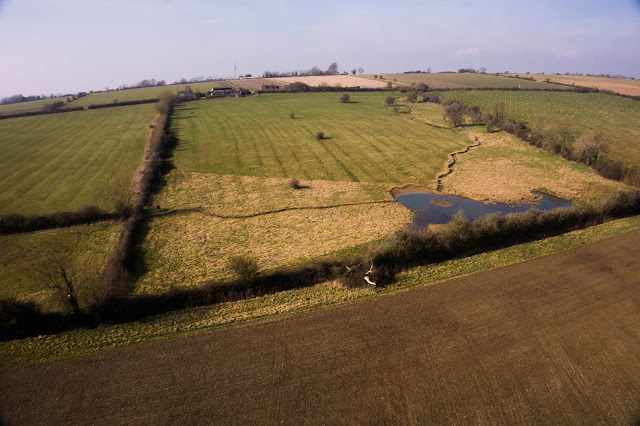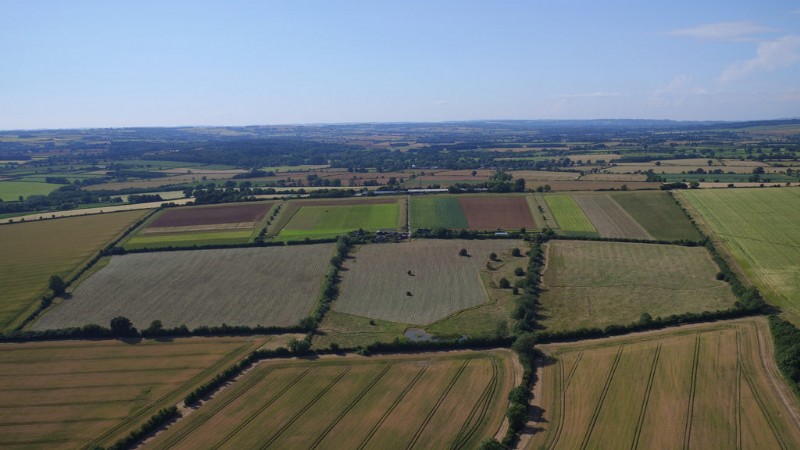
Flood Management
Forgive us for droning on about this, but the drone that flew over Honeydale captured some wonderful footage (watch this space) of our flood alleviation works at full capacity after all the recent rain. Storm Katie has tested the system to the limit and it has continued to be satisfyingly effective. We’re hoping the wetland habitat area will attract more wildlife this year and to help things along a little, we’re introducing frogspawn from a local village donor to the ponds and scrapes. The storm also put paid to our plans to plough the barley strips; it’s been so wet that we’ve had to postpone ploughing to the end of the week.
But there is a change in the air...
The first day of spring, the beginning of British summer time and the Easter weekend has heralded the first signs of fresh growth at Honeydale. We’ve spotted the first wildflowers, a daisy and cowslip and barn owls taking up residence in the boxes.
The young fruit trees in the newly planted orchard, which vary in height from 1ft to 5ft, are also beginning to bud, and the belt of mulch we laid around each tree is doing a good job at weed control. We are keeping the orchard area open with a tractor and flail mower instead of using sheep which have traditionally been used to manage that field but would damage the trees.
Some may have thought we were a little crazy to spin on green manure with a tractor some months ago, but the crop is now growing like mad! We’ll leave it in for another month or so then roll with a crimper roller. So far the weeds are not causing a problem and we’re hoping the rye and vetch will swamp them.

The Herbal Ley is beginning to grow too, and the sainfoin, chicory and birdsfoot trefoil are looking strong. We’re waiting for more growth before putting the sheep on it when it’s been fenced. We’re revising the intensity of the mob stocking; last year we moved the sheep each week but this year they will be moved daily.
We were keen to trial an autumn sown Bumble Bird mix which can be used as an option for countryside stewardship. Usually pollen,nectar and wild bird food sources are sown in the spring, so it was interesting to see what survived the winter and is available to wildlife this spring. The phacelia grew well early on, but was checked by late frost, as has the Gold of Pleasure, a seed bearing plant. They are both still alive. The clovers have grown more slowly but should gather pace as the weather warms up.

In other news…
One of the feral cats has an aptly named cataract, so we’re trying to catch him to take him to the vets, meanwhile a beautiful black cat has turned up at the farm. We’re hoping he brings us good luck for the year ahead, and also that has owner claims him soon. Please let us know if he’s yours.




